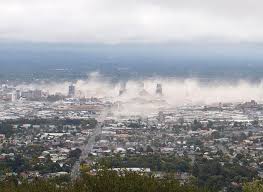Understanding the Impact and Legacy of Chernobyl

Introduction
The Chernobyl disaster, which occurred on April 26, 1986, remains one of the most significant nuclear incidents in history. Located in present-day Ukraine, the explosion at reactor number four of the Chernobyl Nuclear Power Plant released massive amounts of radioactive material into the environment, affecting millions of lives and prompting worldwide changes in nuclear policy and safety regulations. Understanding its impact is crucial as global interest in nuclear power resurfaces amid the stress of climate change.
Details of the Disaster
The explosion was the result of a flawed reactor design coupled with serious breaches of protocol during a safety test. Initial assessments led to the evacuation of Pripyat, a nearby town, 36 hours later, affecting approximately 49,000 residents. Over the following months, this number grew significantly as the Soviet government expanded the exclusion zone. Firefighters and emergency personnel responded heroically but were exposed to lethal doses of radiation, leading to acute radiation syndrome in many.
Environmental and Health Effects
According to reports by the World Health Organization (WHO), the long-term health effects included increased rates of thyroid cancer among those exposed to the fallout, particularly children. The area around Chernobyl, which has been deemed uninhabitable, has become a unique case study in ecology, where wildlife has flourished despite high radiation levels. Researchers have highlighted the resilience of nature, yet the psychological scars from the disaster linger on for many evacuees.
Global Nuclear Policy Changes
In the aftermath of Chernobyl, many nations reassessed their nuclear policies. The disaster led to the establishment of new international safety standards and the creation of the World Association of Nuclear Operators (WANO). Furthermore, Chernobyl inspired the design of reactors to incorporate safety features that prevent such catastrophic failures. This event played a key role in shifting public perception about nuclear energy, causing many countries to reconsider or halt their nuclear programs.
Conclusion
As of 2023, Chernobyl’s legacy extends beyond the realm of environmental studies; it serves as a crucial reminder of the potential dangers of nuclear energy. With the ongoing global debates on climate change and energy production, understanding the events of Chernobyl is vital in making informed decisions about the future of nuclear power. The lessons learned from Chernobyl have the potential to shape safer energy policies and stimulate discussions about sustainable alternatives, ensuring that past mistakes do not recur.









